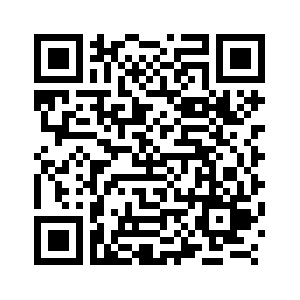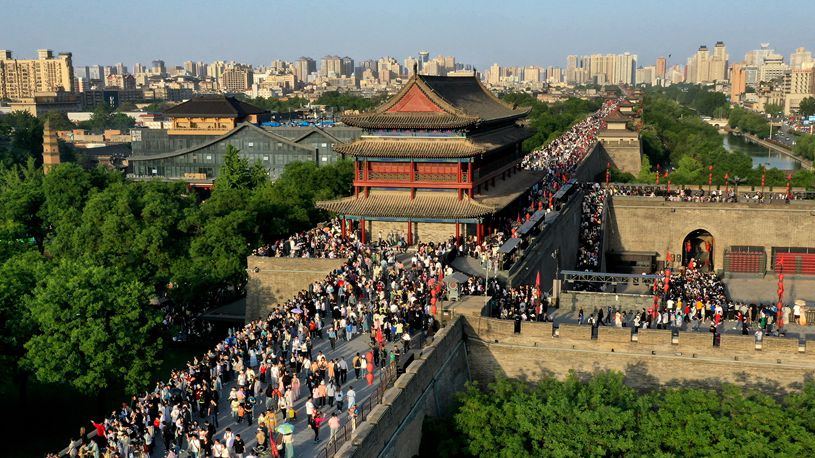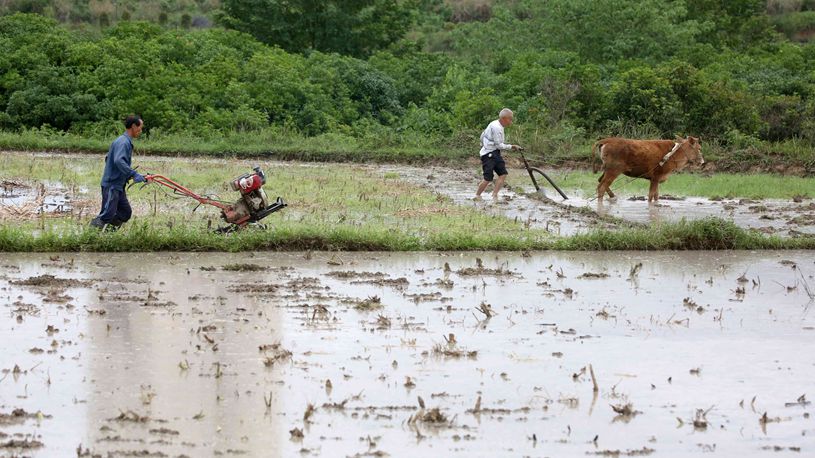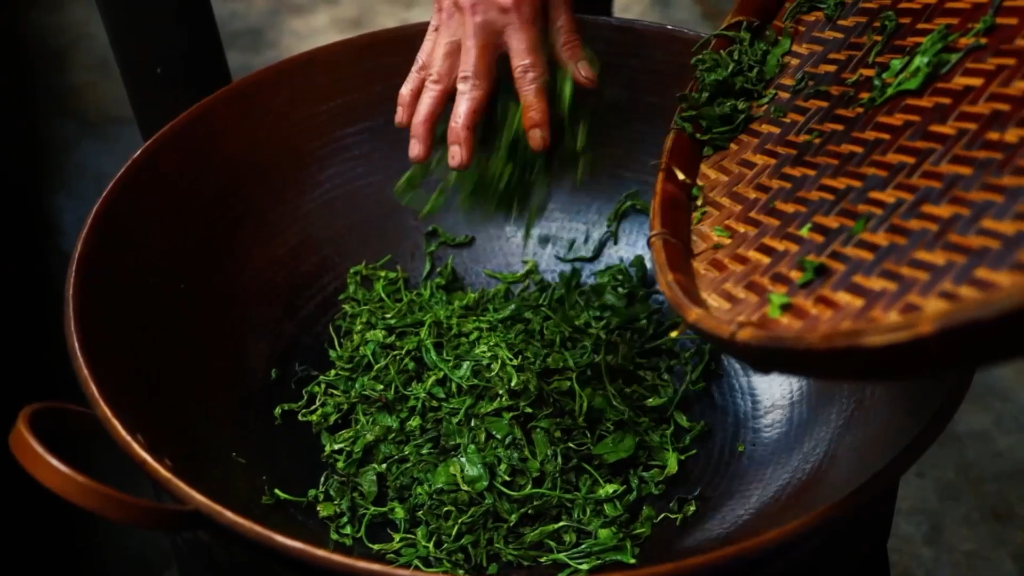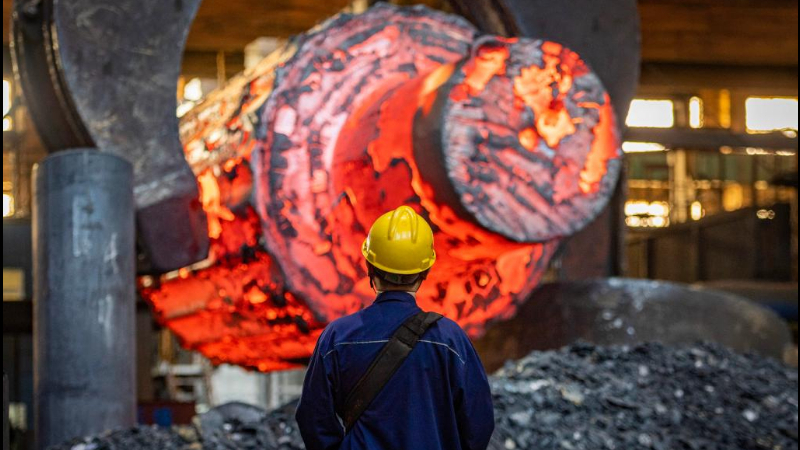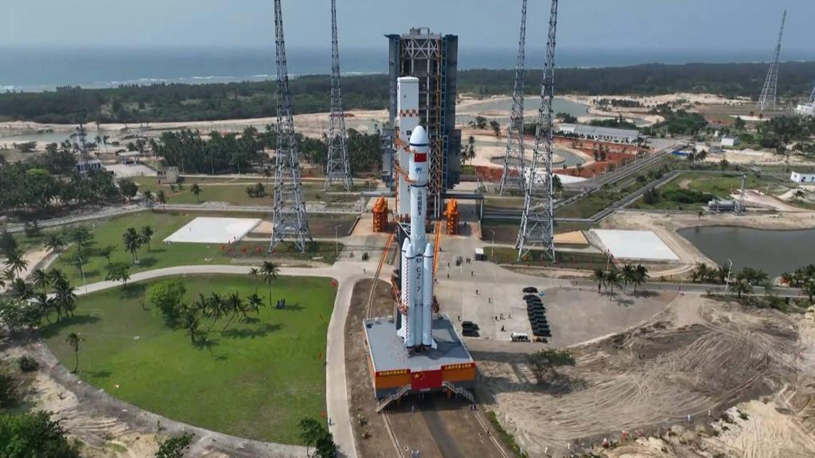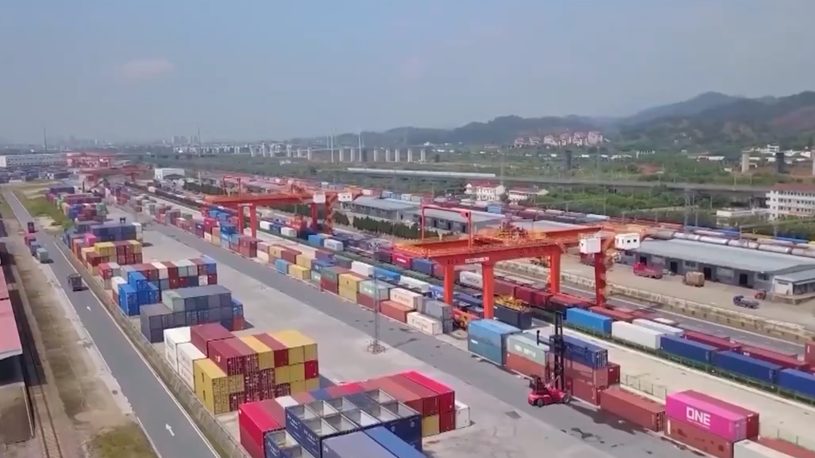
This simulated image captured at the Jiuquan Satellite Launch Center in northwest China shows the manned spaceship Shenzhou-15 conducting a fast automated rendezvous and docking with the space station's Tianhe module on Nov. 30, 2022. (Xinhua/Guo Zhongzheng)
WENCHANG, Hainan, May 10 (Xinhua) -- China's new cargo spacecraft Tianzhou-6 is packed with experiment payloads weighing over 700 kg, including samples and devices for stem cell research.
The country will perform human stem cell experiments aboard the Tiangong space station for the first time, to study the impacts of a microgravity environment on human reproduction, according to the scientists.
The planned experiments include the effects of the space microgravity environment on stem cell lineage differentiation, and the 3D growth and tissue construction of stem cells, said Cang Huaixing, a chief researcher for the station's scientific experiments, at the Technology and Engineering Center for Space Utilization under the Chinese Academy of Sciences (CAS).
They were designed by scientists from Tsinghua University and the Shenzhen Institute of Advanced Technology under the CAS.
Cang said the experiments will be carried out inside the Wentian lab module and see embryonic stem cells differentiated into primitive germ cells, egg-like and sperm-like stem cells, and hematopoietic stem cells.
He added that the changes of the germ stem cells in the space microgravity environment will be observed and studied.
Just as taikonauts experience bone and muscle loss, the space environment also affects cells, especially the stem cells, said Cang, indicating that the in-orbit experiments can help answer the question of how microgravity affects human reproduction.
Stem cells can self-renew or multiply while maintaining the potential to develop into other types of cells. They can become cells of the blood, heart, bones, skin, muscle, brain or other body organs. They can also be used as tools for treating several diseases.
One of the goals of China's manned space program is to search for possible habitable planets, Cang said. "The space environment has microgravity and high radiation, so how to travel, survive and have children in such an environment is the main task of our research."
The stem cell samples are stored in special boxes, each containing about 3 ml of the solution containing cells.
The experiments will require at least 72 sample boxes for in-orbit tests, ground comparison tests and backup uses, Cang said.
The in-orbit tests will last six to 12 days. Before being packed into the cargo craft, the samples need to be stored at suitable temperatures and pH levels on the ground. At the Wenchang Spacecraft Launch Site, scientists are working overtime to keep the cells alive by constantly changing nutrient solutions and supplementing them with carbon dioxide.
The Tianzhou-6 mission is the first spaceflight after China's crewed space station program entered the stage of application and development. The cargo craft will deliver a total of 98 experiment-related items with a weight of 714 kg. "It is the cargo vessel with the most and heaviest experimental payloads since the construction of the Tiangong space station," said Liu Wei, designer of the cargo craft's application system, at the Technology and Engineering Center for Space Utilization under the CAS.
For the first time, the reliability tests of components will be conducted outside the Wentian module, and the space radiation biological experiments outside the Mengtian module, Liu noted. ■
